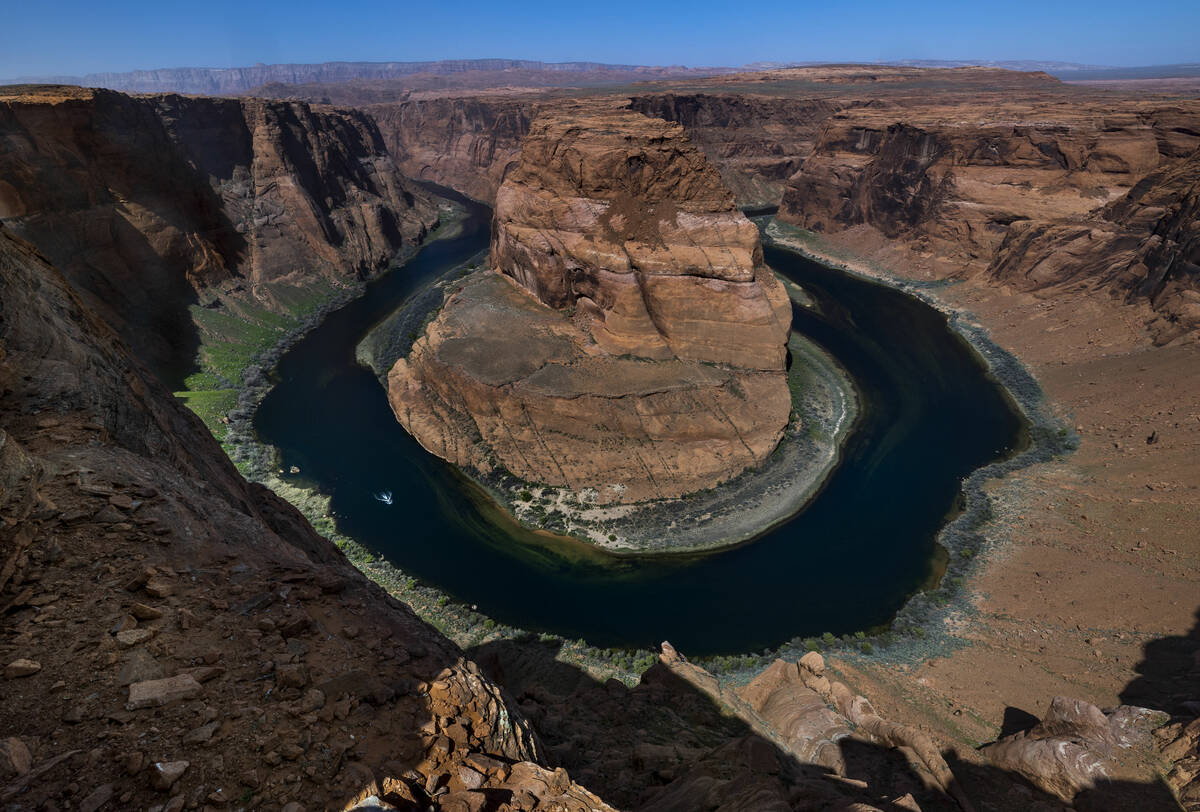EDITORIAL: Carbon, crops for cows and the Colorado River
It’s often easier to blame something you can’t control than confront a problem you can. That certainly applies to the Colorado River.
As summer begins, it’s time for another panic session about Lake Mead’s water level. There is reason to be concerned. The bathtub ring remains distinct. The lake is just 33 percent full, with a water level around 1,060 feet. That’s about 20 feet above the record low level of 1,040 feet recorded in July 2022. Las Vegas will continue to receive water from the lake because of the “third straw” intake pipe.
The snowpack in the Rocky Mountains was below average this year. Scientists now predict the runoff into Lake Powell, which feeds Lake Mead, will be just 55 percent of an average year.
Russ Schumacher, Colorado’s state climatologist, blames global warming for the decline. He’s not alone. “Colorado River Basin has lost 10 trillion gallons due to warming temps, enough water to fill Lake Mead,” CNN reported in 2023 about a study from UCLA researchers.
“Unless greenhouse gases are curbed, those (water) reductions are going to continue to track with temperature increases,” Benjamin Bass, the study’s lead author, told CNN at the time.
But it’s worth remembering that global carbon emissions are still climbing, especially as China and India continue to burn coal. Nevada could end its fossil fuel emissions tomorrow — destroying itself in the process — and it would do nothing to curb worldwide greenhouse gases. In addition, water shortages were eventually inevitable regardless of warmer temperatures, given that the Colorado River Compact — signed in 1922 — based state allocations on inflated and overly optimistic projections for river flows.
Fortunately, there are other factors in this equation, primarily how Colorado River water is used and who uses it. A 2024 study in the Communications Earth &Environment journal confirmed that a majority of the water sustains agriculture. “Water consumed for agriculture amounts to three times all other direct uses combined,” the study found. “Cattle feed crops including alfalfa and other grass hays account for 46 percent of all direct water consumption.”
Put another way, farmers use more water than the cities of Las Vegas, Phoenix and Los Angeles use collectively. Residential development and growth isn’t the problem. Las Vegas has made tremendous strides in stretching its meager allocation through conservation and return-flow credits. Southern Nevada uses less water today than in did two decades ago despite significant population gains. That’s why it’s still possible to accommodate further development.
The Colorado River states are currently involved in intensive and often contentious negotiations over a water use plan moving forward that would stave off federal intervention. Warmer temperatures are a concern. But agricultural interests often have senior water rights and represent a powerful lobbying force. Front and center must be the debate about whether growing water-intensive crops in the deserts of California and Arizona represents the best and highest use of a precious resource.

















